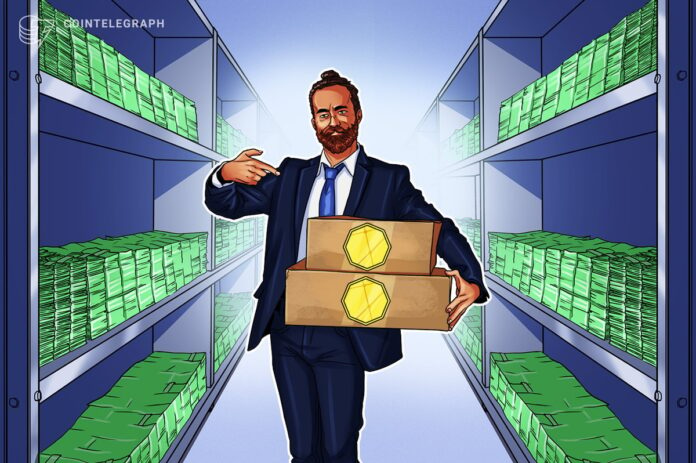Cointelegraph by Vince Quill
The growing use of yield-bearing tokenized US Treasury products as collateral for leveraged crypto trading creates new pathways for risk transmission across markets, increasing the likelihood of cascading effects on decentralized finance (DeFi) protocols.
Tokenization is the process of converting real-world assets into digital tokens on a blockchain. In the case of US Treasurys, these tokens represent onchain claims to government debt, offering an alternative comparable to money market fund shares. The current market capitalization of tokenized US Treasurys stands at nearly $7.4 billion.
According to a June report from rating service Moody’s, although short-term liquidity funds are low-risk assets, they are not riskless:
“In addition to risks borne by all MMFs and similar short-term funds, such as credit, interest rate and liquidity risk, tokenized short-term liquidity funds have additional risks that stem from the novel technology.”
One such risks is tied to leveraged trading, which relies on loan-to-value (LTV) ratios. When the value of the posted collateral declines below a certain threshold, traders are either automatically liquidated or sent a warning message to add more collateral to maintain their leveraged position.
In June, crypto exchanges Deribit and Crypto.com became early adopters of this trend by allowing users to post tokenized US Treasury funds as collateral for leveraged trades. Both platforms integrated BlackRock’s BUIDL fund, a tokenized money market instrument issued via Securitize. The fund holds nearly $2.9 billion in value locked, according to data from RWA.XYZ.
In a recent presentation to the Treasury Borrowing Advisory Committee, the US Treasury noted that tokenization provides a bridge to asset volatility that “could spill over into the broader financial markets as the size of tokenized assets become more significant,” warning that, “in times of stress, seamless ledgers can become a negative as deleveraging and fire sales can rapidly spread across assets.”
Tokenized treasuries are exposed to several additional risk vectors, including de-dollarization by foreign countries, fiscal spending policies, liquidity issues, interest rate decisions and geopolitical turmoil.
Nick Jones, founder of Zumo, a crypto-as-a-service platform, urged vigilance to protect against any structural shocks. The executive told Cointelegraph:
“Robust risk management, the anticipated increased regulatory oversight, and transparency will all be key to mitigating such variables as traditional finance and decentralized finance continue to converge.”
Related: Tokenized funds are scaling fast, hitting $5.7B — Moody’s
Next step for tokenized collateral
While tokenized Treasurys have become a key entry point for institutions into onchain finance, growing concerns over US fiscal stability and geopolitical tensions are prompting investors to explore a wider range of tokenized real-world assets, including gold and real estate, as alternative stores of value.
US Treasury yields spiked following US President Donald Trump’s sweeping trade tariffs as bond investors responded to the proposed policy by dumping US government debt.
“Ultimately, bond yields are a function of the ability of the government to pay its debts. As its credit-worthiness declines, yields rise,” author and economist Saifedean Ammous wrote in an April 23 X post.
Inflation, geopolitical tensions and growing concerns about the US government’s creditworthiness have increased demand for alternative and relatively stable tokenized real-world assets (RWA), including gold, real estate, and energy-backed commodities.
“While tokenized treasuries offer institutions a way to park their capital in a low-risk, yield-bearing asset, this does not offer the investors in these funds enough,” Kevin Rusher, founder of the RWA lending ecosystem RAAC said in a message sent to Cointelegraph.
Rusher added that the next phase of the RWA-backed market will be the tokenization of hard assets such as gold and real estate, the latter of which provides cash flow income.
Tokenized gold could also provide users with cash flow if the tokens are lent out for yield. Conversely, tokenized gold could be used as collateral to secure loan financing across the DeFi ecosystem.
This article does not contain investment advice or recommendations. Every investment and trading move involves risk, and readers should conduct their own research when making a decision.
Magazine: Ethereum is destroying the competition in the $16.1T TradFi tokenization race
